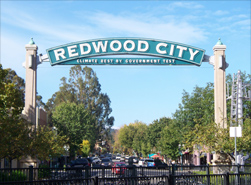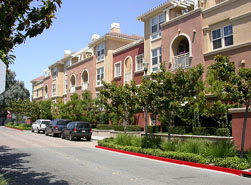Tips for Writing Letters to the Editor
Click on the links below to jump to the appropriate section:
Guide to a Great Letter to the Editor
Where to Send your Letter to the Editor
Guide to a Great Letter to the Editor
1. Shorter is better
Being concise is more desirable than being comprehensive.
2. Grab the reader
Be provocative. Write when the issue is “hot.” Three or four sentences composed immediately are better than a “treatise” that requires days to pull together.
3. Put passion in your position
Provide anecdotal examples of how you (or similar people) are/might be affected. Let your strong emotions show.
4. Get your facts straight
Do not massage the truth or use any statistics you cannot back up. Don’t open yourself up to rebuttals from those who may know your position is weak or unsupportable. Use the RCNU website/Issues pages for fact checking.
5. Proof for spelling and grammar
Remember
-
Published LTEs are a primary resource elected officials use to take stock of their district and what their constituents care about.
- LTEs are a powerful complement to all the other actions RCNU is taking.
-
LTEs are a free and ongoing opportunity to get the message out.
Cautions
- If you have professional experience and can use compelling statistics or speak from experience do so, but focus on a key argument and keep your discussion local.
- Do not use valuable column inches to punish the opposition through name-calling or other means.
- Be careful about berating elected officials in print. Politely urge action, yes, OR politely express disappointment but blaming an unhelpful legislator in the local newspaper will likely only serve to harden her or his position.
- Do not quote others without their specific written permission to do so.
Details
- Submission is usually through the website of the paper, with word length limitations.
- You will need to include all of your pertinent contact information. You must publish under your own name (not RCNU). Your address will never be made public but must always be included with your submission. A phone number is often required.
Where to Send Your Letter to the Editor
Send your LTE separately to each newspaper where you would like your letter published. Include your name, address and daytime phone number. The word limit for LTE's is generally 250 words; the Mercury News prefers 125. Remember, the shorter and more powerful your letter, the more likely that it will be published.
Daily News
letters@dailynewsgroup.com
Daily Journal
letters@smdailyjournal.com
Daily Post
letters@padailypost.com
S.F. Examiner
letters@sfexaminer.com
The Almanac
editor@AlmanacNews.com
Redwood City Spectrum
writers@spectrummagazine.net
San Mateo County Times/ Mercury News
letters@mercurynews.com
SF Chronicle
http://www.sfgate.com/chronicle/submissions/letters@sfchronicle.com
(200 word maximum)
Sample Letters to the Editor
The following are some examples of well-written LTE's:
The Daily News, 3/11/10
Perilous salt flats
Dear Editor: The map of the U.S. Geological Survey shows Foster City and Redwood Shores at high risk for liquefaction in the case of a severe earthquake. I looked it up after attending a forum where the representative for the Cargill project asserted that the salt ponds next door to these two cities were a safe place to build. I believe he even said they were the safest place to build. A seismologist in the audience said that was quite untrue and that a tidal plain is actually the least safe place to build, modern technology notwithstanding. Privately the seismologist added that the so-called mitigations the two cities have will not save structures but are about evacuation. I guess that’s why my Foster City friends joke that they have a raft in their attic.
Building housing, even if only 15 percent is affordable, as Cargill promises, is an idea that we can all support. But aside from being really bad for the environment, it sure doesn’t look safe to build it on a tidal plain such as the Cargill salt ponds.
Gail Sredanovic, Menlo Park
San Jose Mercury News, 3/10/10
Cargill decision should be delayed
The Bay Conservation and Development Commission (BCDC) is poised to issue new regulations restricting development in the Bay. Commissioner Rich Gordon says the proposed regulations will constitute a major obstacle for Cargill's plan to build 12,000 homes on Redwood City salt ponds. DMB, Cargill's development wing, is requesting that BCDC delay a vote on the new regulations. Meanwhile, DMB/Cargill is pressuring Redwood City to move beyond a preliminary (Tier One) analysis of their proposed development. DMB/Cargill wants it both ways — delay regulation and hurry-up review of their proposed development. One would hope that Redwood City council members, city manager and planning staff would postpone any decisions on the proposed DMB/Cargill development project until the highly anticipated BCDC regulations are enacted.
Kaia Eakin, Redwood City
S.F. Chronicle, 3/8/10
City loses its way
When I moved to Redwood City 10 years ago, I was impressed with the city's fleet of hybrid vehicles, restoration of the historic City Hall building and infill housing projects at Franklin and Maple streets.
Now I'm furious and baffled. The city's own planners recently recommended that when Cargill retired the salt ponds, some of the property be used for badly needed playing fields and the rest incorporated into the Don Edwards National Wildlife Refuge. But rather than attract business and residents to downtown and restore our precious bay lands, the city is considering filling in the salt ponds to build a competing city - at sea level, with no potable water on site and adding traffic to already congested freeways and roads.
What made Redwood City go so far off the environmentally sustainable track?
Mimi Campbell, Redwood City







